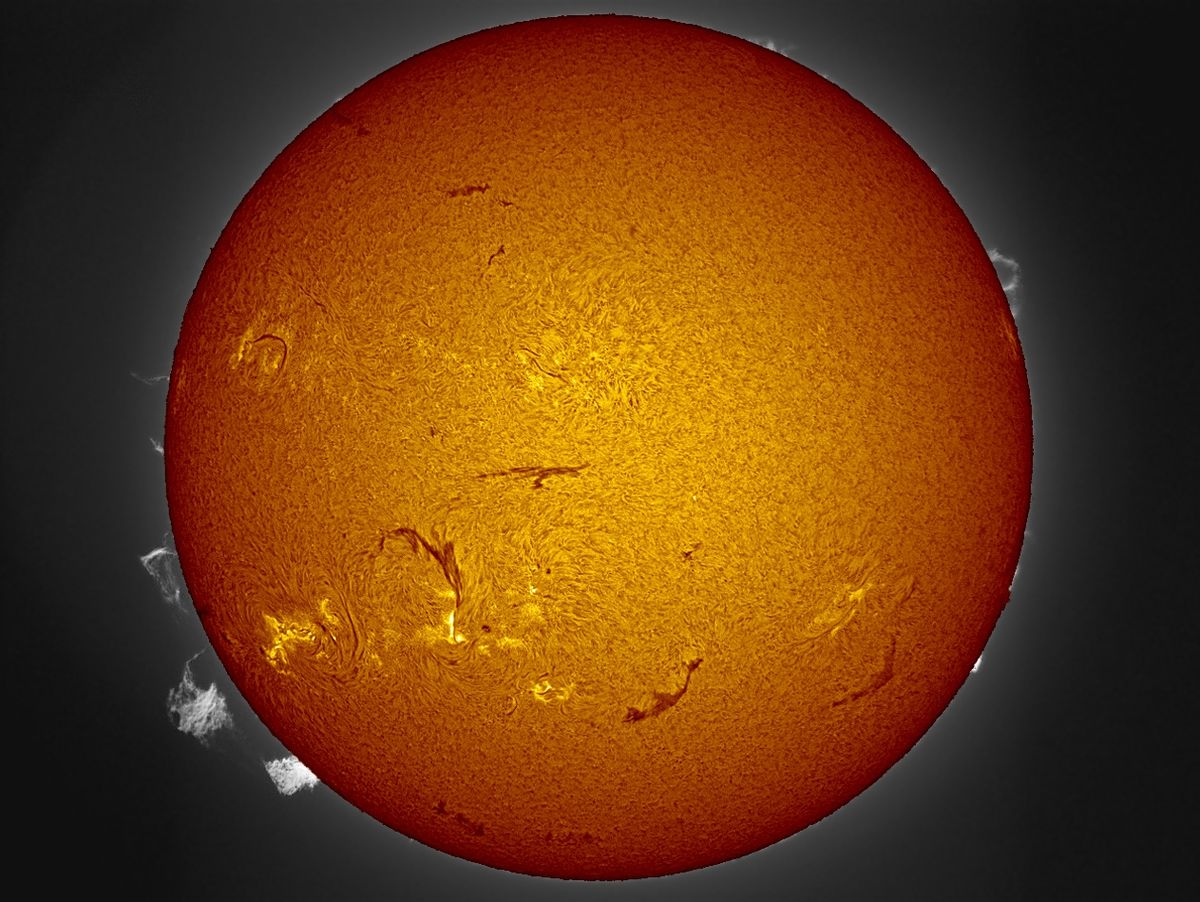Striking Sun Photo Catches 3 Erupting Plasma Tendrils

A mesmerizing photo of the sun, showing three huge solar eruptions bursting from the surface, was captured by an amateur astronomer in California.
Jim Lafferty observed the active sun from his backyard observatory in Redlands, Calif. on July 28. He used a Lunt 100 solar telescope to snap a photo of three eruptions, called prominences, along the southeastern edge of the solar limb.
Prominences are large, bright features on the sun that are often shaped like loops as they erupt from the solar surface. These tentacle-like features are hot tendrils of magnetic plasma and gas trapped inside.
"I was able to capture the "lift off" of one of 3 large prominences present on the southeastern edge of the sun's limb," Lafferty told SPACE.com in an email. "Quite an exciting moment!"
The photo was taken at approximately 1:57 p.m. EDT (1757 GMT) on July 28. That same day, the sun let loose a moderate M6-class solar flare. The flare unleashed a wave of plasma and charged particles, called a coronal mass ejection (CME), into space that delivered a glancing blow to Earth on July 31.
Lafferty felt fortunate to catch the prominences as they were erupting from the solar surface.
"Normally I look at the sun visually through my scope before I start imaging so I was thrilled to see 3 large prominences lined up on the sun's SE limb," he said. "The one in the center had already begun to "lift-off" the limb but was still big and bright. I knew I may have to act fast to get a shot since these events sometimes last just a matter of minutes." [Stunning Photos of Solar Flares & Sun Storms]
Sign up for the Live Science daily newsletter now
Get the world’s most fascinating discoveries delivered straight to your inbox.
After quickly removing the telescope's eyepiece and attaching his camera, Lafferty snapped the stunning photo of the sun. The portrait was created by combining two "master" images — one of the solar disk and one of the prominences — both exposed to highlight as much detail as possible, he explained.
"It's such a thrill to see the sun's features change shape right before your eyes!" Lafferty said.
The sun's activity waxes and wanes on a roughly 11-year cycle. The sun's current cycle, called Solar Cycle 24, began in 2008. The sun's activity is expected to ramp up toward a solar maximum in 2013, scientists have said.
Editor's note: If you have an amazing skywatching photo you'd like to share for a possible story or image gallery, please contact managing editor Tariq Malik at tmalik@space.com.
This story was provided by SPACE.com, a sister site to LiveScience. Follow SPACE.com on Twitter @Spacedotcom. We're also on Facebook and Google+.

Denise Chow was the assistant managing editor at Live Science before moving to NBC News as a science reporter, where she focuses on general science and climate change. Before joining the Live Science team in 2013, she spent two years as a staff writer for Space.com, writing about rocket launches and covering NASA's final three space shuttle missions. A Canadian transplant, Denise has a bachelor's degree from the University of Toronto, and a master's degree in journalism from New York University.












